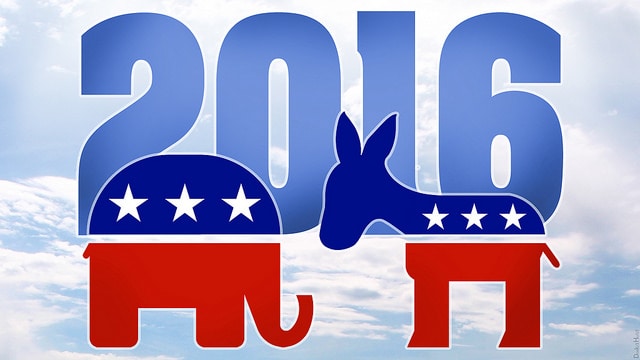What does the presidential race look like going into Super Tuesday? TJP’s political insiders, Bill McCormick and Dan Dixon, have put their heads together to ask a few important questions for us to consider…
1. Who Won?
Hillary Clinton and Donald Trump. And Marco Rubio.
“Wait… but Rubio finished second!” you interject. Yes…but Jeb Bush’s dropping out was a big win for the Florida senator. Evidence from exit polls suggests that the largest percentage of Bush’s supporters are likely to support Rubio.
For the details, see here and here. To compare that to the most reliable predictions, see here.
2. Who Lost (and Who Didn’t)?
Jeb Bush and Ben Carson lost. Bowing out was a smart move for Bush. Still, it has to be a disappointment for a campaign that began with so much promise (and money to boot). Carson vowed to carry on his campaign, but he finished last in a state where he once polled second. What will it take for him to call it quits?
John Kasich and Bernie Sanders did not lose.
Kasich more or less met expectations in South Carolina. His campaign is taking credit for driving Bush out of the race (by siphoning votes away from Bush). But the SEC primary is not friendly territory for Kasich, and he is going to need to find a way to stay relevant while the top three duke it out.
Sanders had a far better showing than many predicted, and drew Latino support in a way that should trouble the Clinton campaign. That said, Bernie still needs to win primaries, and it’s not clear that he will. Which leads us to our third question…
3. Does Bernie have a demographics problem?
The short answer is that it depends on which demographic. Exit polls show that Bernie beat Hillary by 8 points among Latinos in Nevada. This is a massive shift from 2008, when they supported Clinton over Obama by a whopping 64 to 26 percent.
We know about Bernie’s support from millennials, but that demographic alone is not enough. Could Latinos be a key group for him? At this point, it’s hard to tell. They identify strongly as Democrats, but are culturally conservative. Their share of the population is growing, but historically they have voted at low rates.
Bernie carried Latinos and whites, albeit by a narrow margin. But African-Americans strongly favored Clinton (76 to 22 percent). Though they only made up 13% of Nevada voters, that was enough to carry her to a 5+ point victory.
Looking ahead, states like South Carolina have much larger African American populations. Bernie needs to find a way to win over African-Americans; if he fails to do so, the nomination could be Hillary’s sooner rather than later.
4. Does religion matter this year?
The emphasis this cycle has been on Evangelical voters. They were important in Iowa and South Carolina, and there is no question that they break strongly for Republicans.
But Evangelicals have not rallied around one candidate in either contest, contrary to some claims. Trump, Cruz and Rubio received sizable percentages of the Evangelical vote in Iowa and South Carolina, with none of them dominating. If anything, Cruz underperformed with them in South Carolina. Although Trump did well among evangelicals, it is worth bearing in mind that the majority of them do not perceive him as religious — in other words, they are not voting for him because he shares their values. If Evangelicals are breaking for Trump, they are not doing so for religious reasons.
Little has been said of the Catholic vote this cycle. Does it exist? The short answer is probably not. Catholics are geographically, economically and ideologically dispersed, and so it is not surprising that in this cycle Catholics seem to be voting more or less in line with the general electorate. Catholics do get media attention because of their numerical prominence in swing states like Ohio, Wisconsin and Florida. But even in those cases it is not clear that there is a distinct “Catholic vote.”
While Catholics are not likely to strongly flock to one candidate in either party, they still make up a large percentage of the electorate. Thus picking a fight with their extremely popular leader would seem to be bad idea. Unless, of course, you’re Donald Trump. Which leads us to our final question…
5. Can Anything Hurt Trump?
Yet as we know, picking a fight is exactly what Trump did, when he targeted his biggest foe yet: Pope Francis, Vicar of Christ and [who knew?] Papal Pawn of Mexican Politics.
Predictably, the media jumped all over Trump, going so far as to misrepresent what the Pope said. And equally predictably, Trump coasted to another big victory.
Such a spat is a familiar motif of his campaign: 1) Trump makes incendiary comments about women, Latinos, Muslims, Pope Francis, etc. 2) Many cry out, “How can he say these things!” 3) Others respond, “Donald just tells it like it is.” While other campaigns have been destroyed by far less, Trump’s supporters find in him a courageous voice who will not be shut down by a broken political establishment. Thus: 4) any resistance to Trump is further evidence of the need for Trump.
One wonders whether Trump can say or do anything to cause some of his supporters to defect. Even if not, there is reason to believe his support has a ceiling. Over half of his voters decided to vote for him over a month ago, versus only 14 percent in the “last few days.” By comparison, every other GOP candidate had higher margins of voters choose them at the last minute. This has enormous implications for Trump: as the field narrows, it will be progressively more difficult to expand his base. In the meantime, however, we should expect him to continue piling up delegates, no matter what he says.
South Carolina has a reputation for backing the “Establishment” choice, a “firewall” against insurgents. Time will tell if Trump will indeed become the frontrunner the GOP will have to get behind, or if South Carolina got it wrong in 2016.
–//–
Title Image by Flickr CC user Donkey Hotey, available here.


